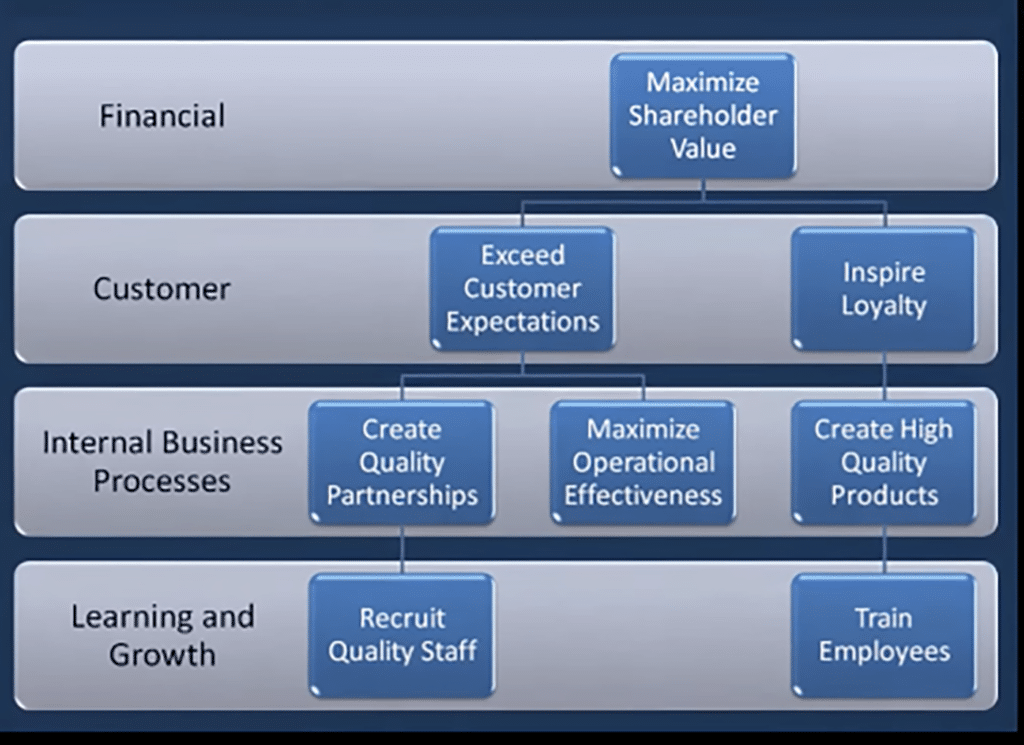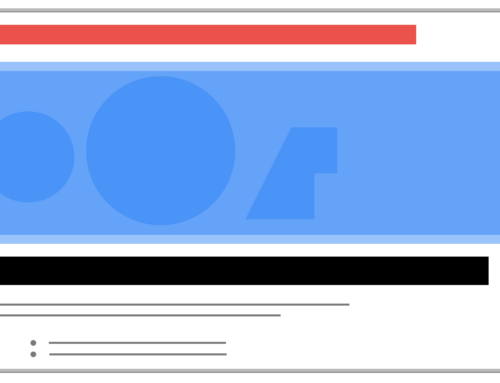A balanced scorecard template brings together many elements; including focus on key stakeholders, shareholders, customers, employees, and processes.
“What you measure is what you get.” —Kaplan & Norton
What’s more, a Balanced Scorecard guards against focusing on just one measure to improve. Which can, in turn, hurt the other measures. By forcing senior managers to consider all the important measures together, the Balanced Scorecard lets leaders see whether improvement in one area may have been achieved at the expense of another. Even the best objective can be achieved badly.
The balanced scorecard reduces information overload by limiting the number of measures used while giving senior managers information from four different perspectives. Companies rarely suffer from having too few measures.
“When performance is measured, performance improves. When performance is measured and reported back, the rate of improvement accelerates.” —T.S. Monson
Balanced Scorecard Example?
Most of us have seen the dashboard of instruments on a modern jet cockpit. Very complex. It can be overwhelming for an untrained person to even start to understand.
However, to a trained flight crew, the dashboard provides all the information and feedback they need to fly that jet almost anywhere in the world. The dashboard provides just the right amount of information needed—not too few screens and gauges, and not too many.
Pilots need details about many aspects of the flight for the complex task of navigating and flying an airplane. They need information on fuel, air speed, altitude, bearing, destination, and other indicators that summarize the predicted environment. If the pilot relied on just one instrument it could be fatal.
Managing a complex organization today requires that managers be able to view performance in several areas simultaneously. And, just like a jet pilot, you can’t rely on one set of measures to the exclusion of the others. No single measure can provide a clear performance target. You need a “dashboard” that provides a balanced presentation of both financial and operational measures.
The most effective dashboard for organizations is called the balanced scorecard template.
What is a Balanced Scorecard?
The Balanced Scorecard can be considered a methodology. Financial and non-financial objectives can be identified in relation to strategic priorities.
It then looks at measures, setting targets for the measures, and finally strategic projects (often called initiatives). Forcing a company to think about how objectives can be measured and then identifying projects to drive objectives. This avoids creating costly projects that have no impact on the strategy.
The name “balanced scorecard” comes from the idea of looking at strategic measures in addition to traditional financial measures to get a more “balanced” view of performance. A balanced scorecard focuses on both high-level strategy and low-level measures. A scorecard can take a big, fuzzy strategic vision and break it down into specific, steps.
The Balanced Scorecard Sees Your Organization from Four Perspectives
Balance is brought about by a focus on financial and non-financial objectives that are attributed to four areas of an organization—called perspectives. There is a causal relationship between the perspectives. Internal business process changes can impact customers and improve financial results.
Check out our Balanced Scorecard Example
1. Culture / Learning and Growth
The learning and growth perspective looks at your overall corporate culture.
- Are people aware of the latest industry trends?
- Is it easy for employees to share knowledge?
- Does everyone have access to training and continuing education?
Technology also plays a major role in learning and growth.
- Are people able to use the latest devices and software, or are your archaic systems stuck running yesterday’s tech?
- What are you doing to make sure your organization is staying ahead of your competition?
2. Internal Business Processes
How smoothly your business is running? Efficiency is important here. It’s all about reducing waste, speeding things up, and doing more with less.
- Are there unneeded obstacles standing between new ideas and execution?
- How quickly can you adapt to changing business conditions?
This perspective also encourages you to take a step back and get a little philosophical about your company.
- Do you know what your customers actually want?
- What should you be best at?
3. Customers
Additionally, the customer perspective focuses on the people who actually buy your products and services.
- Are you winning new business?
- How about keeping your existing customers happy?
- How are you viewed in your industry compared to your competitors?
Customer satisfaction is a great forward-looking indicator of success. If you treat your customers well today, then it will impact how much money you’ll make tomorrow.
4. Financial
Your are taking a balanced look at your organization and don’t want to ignore traditional financial measures simultaneously. Comparatively, the financial perspective is a major focus of the balanced scorecard.
- Are you making money?
- Are your shareholders happy?
Not only is the financial health of your organization a lagging indicator showing the result of past decisions, but also it’s still incredibly important. Money keeps companies alive and the financial perspective focuses solely on that.
Measure outcomes, not activities
Basically, the balanced scorecard template improves performance. Additionally, achieve focus on your organization and big-picture strategic goals. Comparatively, it links to a vision to strategic objectives, measures, targets, and initiatives. It balances financial measures with performance measures and objectives related to all other parts of the organization. Undoubtedly, consider it a vital business performance management tool.
See how you can create a balanced scorecard with KPI Fire





